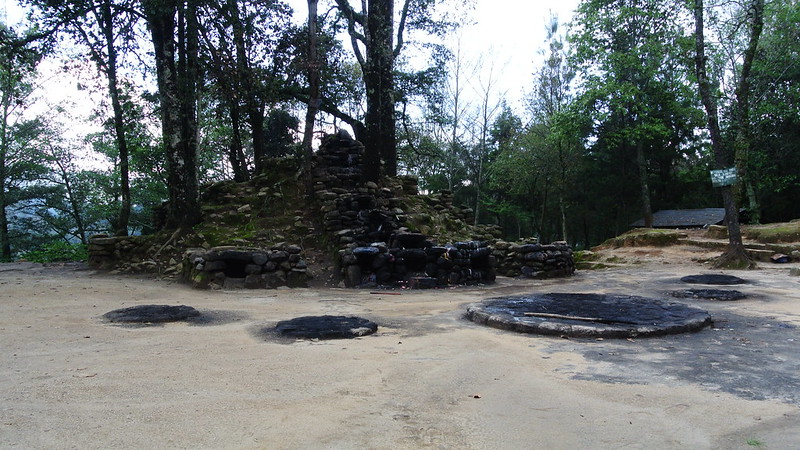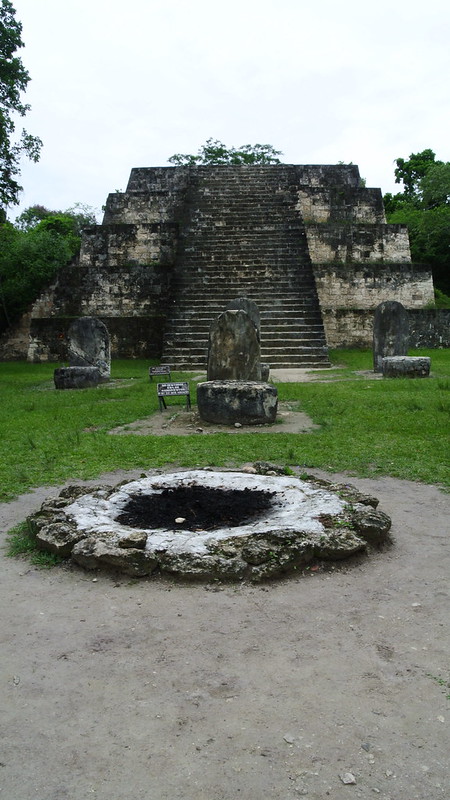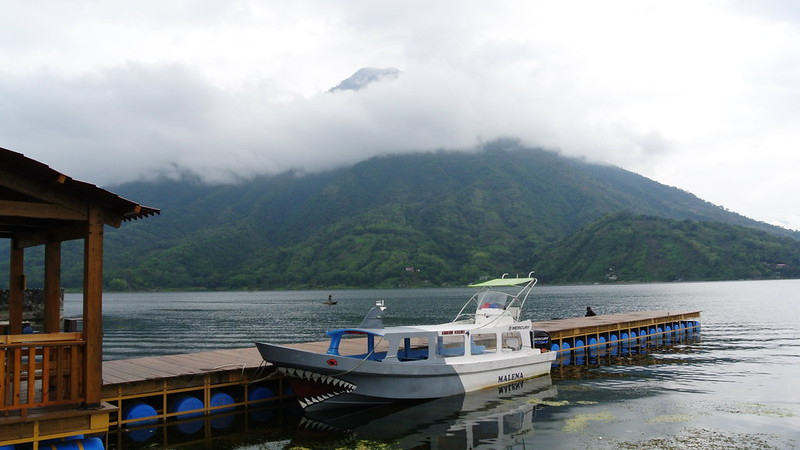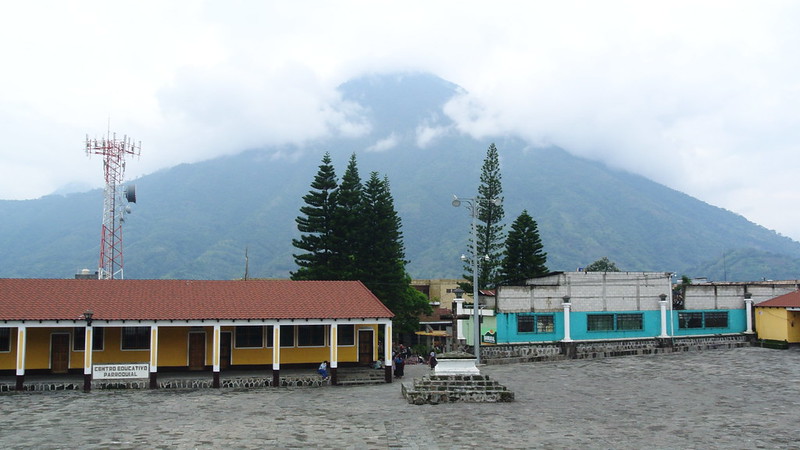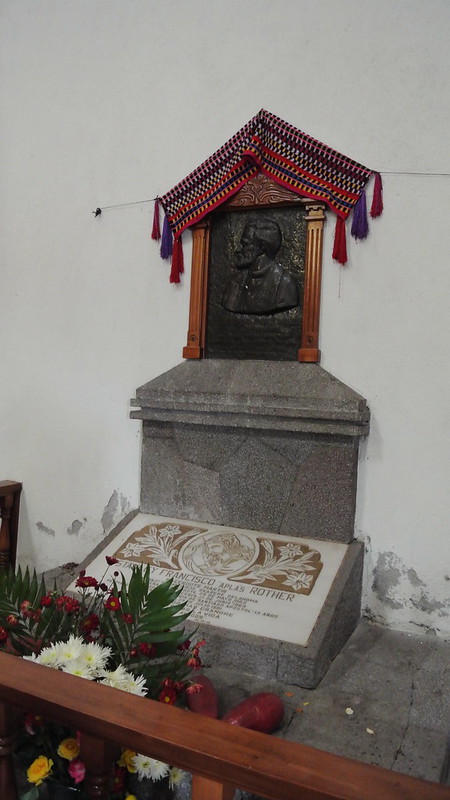Without a question, this Maymester will NOT be my last trip to Guatemala or Belize. I’ve experienced much more than I thought possible in a four-week period of time, and I’ve met people whose stories and compassion will be with me for the rest of my life. I’d like to thank everyone that made this trip possible for me, and everyone else that made this trip memorable. Without you guys, I would not have been able to walk in the footsteps of the ancient Maya, or alongside the contemporary, much alive, Maya people that inhabit the lands of their ancestors. I’ve been to some of the major Maya sites of the Yucatán Peninsula (Chichén Itzá, Coba, and Tulum), but they didn’t have the same breath of life that Iximché or Tikal still breath.
(Above: Contemporary ritual burning at Iximché)
(Above: A modern stela at Iximché)
(Above: Contemporary ritual burning at Tikal)
Maya people of the Yucatán don’t have the same access to their ancestral lands as the Maya people of Guatemala, who can once again practice their rituals where the Classic Maya did day in and day out. It’s incredible to see Maya women, and occasionally Maya men, wearing their traditional clothing (traje), selling their hand-woven textiles, or cooking in the way their people have for more than a millennium. The way the Maya are talked about in American grade schools would make you think they are all dead and gone, but simply getting off the plane in Guatemala City proves otherwise. Traveling through the Highlands of Guatemala, you wouldn’t even think they went through a conquest, colonization, or a very recent and brutal civil war…at least until you start talking to the people. I heard several people’s life stories while on this trip that would break anyone’s heart. While at the Tz’utujil Maya town, Santiago Atitlán, formerly called Tz’ikin Jaay, I met Dolores Ratzan.
(Above: Prof. Runggaldier with Dolores Ratzan!)
(Above: View of the lake from Santiago Atitlán)
She gave us a tour of the town while stopping at a few key spots, such as the Catholic Church and a few of the Cofradias. Dolores was extremely open and welcoming, she shared her personal struggles as well as those of her people starting at the conquest thru the civil war and up to the present day. The civil war has impacted her life, and the whole of Guatemala, since its conception in the 1960’s. Over a thirty-year period of time, Dolores and tens of thousands of Maya people were targeted by the military as conspirators with the guerillas. Dolores was able to flee to the United States as a refugee shortly after her name appeared on a list of people that the government forces intended to make “go away.” That list was distributed in the plaza outside the Catholic Church in Santiago Atitlán, outside the very same church where Father Aplas, or Stanley Francis Rother, was murdered in the night shortly there after.
(Above: Plaza view from Catholic Church in Santiago Atitlán)
(Above: Dedication to Father Aplas)
Father Aplas, as the locals called him, was a Catholic Pastor from Oklahoma who worked to help the people of Santiago Atitlán out of poverty, he opened a hospital, bought and rented land to the locals so that they could grow food, and allowed the traditional Maya people to perform their rituals. Dolores was a young girl when he first came to the town, and she told us she would not be alive today without him. She was one of the many children Father Aplas helped by providing food to their families when they came up short. I really cannot do justice to Dolores’ ability to recount Father Aplas’ many deeds and untimely death, but I can certainly suggest to anyone to travel to Guatemala and learn. Learn from the people who suffered such a great deal for embracing their traditional heritage, or for helping a population that so desperately needed and still needs a helping hand. See why they fought for their culture, visit the ancient and not so ancient sites, eat what they eat, live how they live, and maybe try to learn a Mayan language. Since traveling across the world of the Maya, I decided to set a few goals for myself: learn Spanish, attempt a Mayan language, learn what I can do to prevent the looting of ancient artifacts, and to volunteer for archaeological digs. I would like to continue to learn as much as I can from the living Maya and those who have since “entered the water.”


